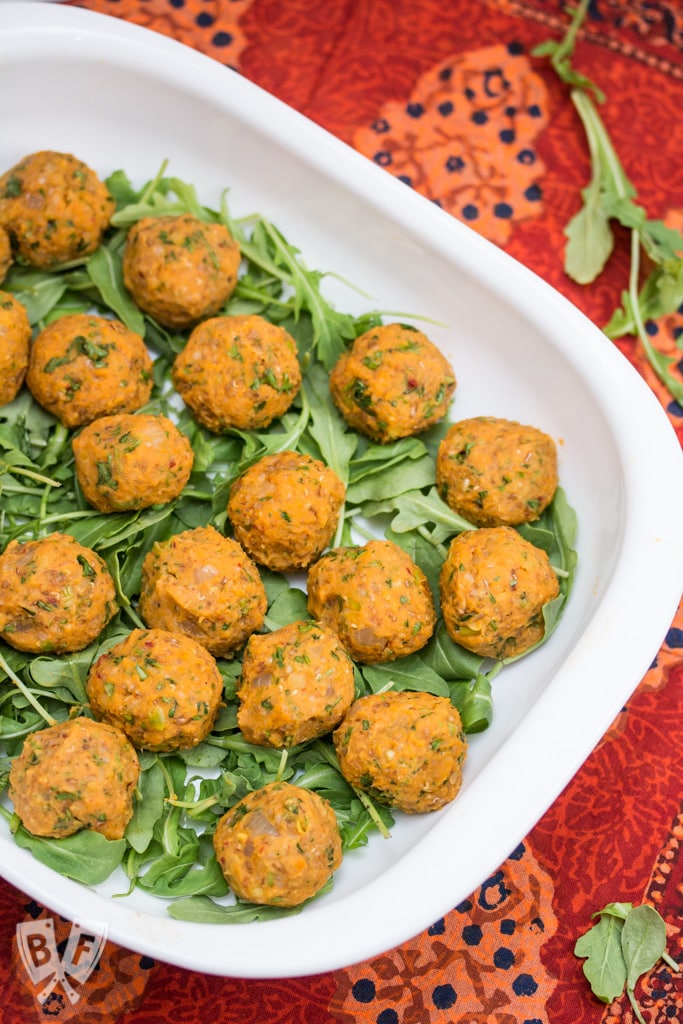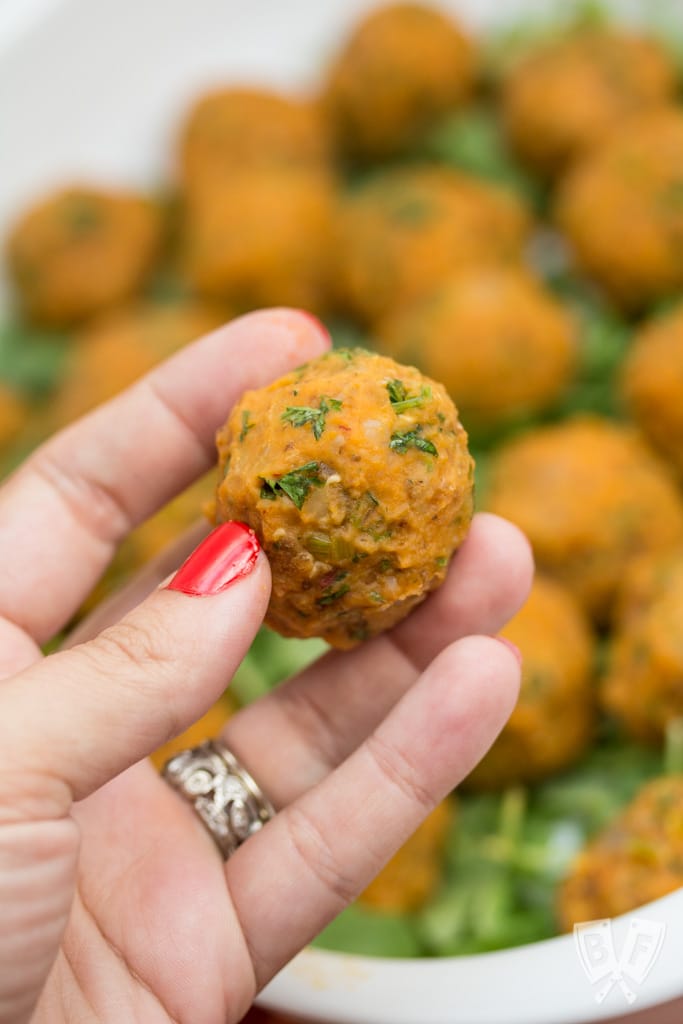by on May 5, 2014 in Cakes and Desserts 13
As I am getting ready for my upcoming Turkish cookery class on 10th May, I couldn’t resist sharing this delicious dessert from our class, baked dried apricots with walnuts stuffing in the new recipe card format. Such an easy, yet delicious and wholesome treat, if you’d like to have a go too.
One of Turkey’s most prolific fruits is the apricot. Because of their abundance, some of the yearly harvest is allowed to dry in the hot summer sun in order to be enjoyed all year round. Malatya, a city in southeast Turkey, is particularly famous for excellent dried apricots which are exported throughout the world. You can find dried apricots in most stores these days, online Turkish store Tulumba.com also carries them if you live in the US.
Apricots are great snacks; they are packed with fiber, antioxidants and their naturally rich, wonderful flavor is icing on the cake. This easy dessert is great for parties, sharing with friends or family or just indulging yourself. Hope you enjoy it.
Afiyet Olsun,
Ozlem
- 225 gr / 8 oz dried Turkish apricots
- 3 fl oz / ⅓ cup water – if needed –
- 30ml/2 tablespoons butter
- 30ml/2 tablespoons brown sugar
- For the filling:
- 75 gr /1/2 cup crushed walnuts into small pieces
- 50 gr / ¼ cup brown sugar
- ½ cup water for baking
- Crushed pistachio nuts for garnish
- Preheat oven to 180 C/ 350 F
- Soak the dried apricots in warm water for 10 minutes, if they are really hard. Then drain the water. If they are already soft enough to split open, you can skip this stage.
- Combine the crushed walnuts and brown sugar in a small bowl as the filling.
- Split open the apricots with a small knife, making sure one end is still intact.
- Stuff each apricot with a teaspoonful of crushed walnut and brown sugar mixture and slightly close it up.
- Grease a baking tray with olive oil or butter and place the stuffed dried apricots on it.
- Pour the water over the tray.
- Place a tiny little dab of butter on the top of the each stuffed apricot.
- Sprinkle 2 tablespoons of brown sugar over the apricots and bake in the oven for 25 minutes.
- Arrange them in a serving dish and sprinkle over some crushed pistachio nuts.
Homemade Cezerye; Caramalised Carrot Paste Delight with Nuts
Have you ever tried the delicious Cezerye dessert? A specialty from Mersin region at southern Turkey, Cezerye is a delicious confectionery made of carrots, nuts and sugar, coated with desiccated coconut flakes. They are utterly delicious, healthy and also known to be an aphrodisiac.
With my roots going back to southern Turkey, Antakya, I grew up sampling the very best Cezerye from the nearby Mersin region. Such a delicious and healthy snack, it was always available whenever we wanted some for a treat, therefore I haven’t really thought of making them when I was home. But living abroad and not having an access to these scrumptious treats make you brave enough to have a go at them, like making homemade Turkish Delights. I am delighted to report you that compared to making Turkish Delights, Cezerye is so much easier to make, lighter and equally delicious. They are traditionally made with hazelnuts; I used walnuts for my Cezerye recipe and they were delicious. My children absolutely loved them!
Carrots have never been sweeter; hope you can have a go and treat yourself, family and friends with these delicious carrot delights. Cezerye keeps well in an air tight container for a week.
Afiyet Olsun,
Ozlem
- 3 medium to large carrots (app. 400 gr), cleaned and grated
- 200 gr / 7 oz. / 1 cup white sugar (or 1¼ cup brown sugar)
- 50 gr / 2 oz. walnuts, chopped into small pieces
- 8 fl. oz./1 cup water
- 50 gr/ 2 oz./1/3 cup desiccated coconut flakes to decorate
- Bowl of water to shape cezerye squares or balls
- Place the grated carrots, ½ cup water and sugar in a wide, heavy pan.
- Cook over medium heat, uncovered, stirring often. Cook this way for about 30 minutes or until all the liquid evaporated.
- Stir in the rest of the ½ cup water and cook again on medium heat, stirring continuously (carrots also release their own juice, therefore I prefer to add the liquid a step at a time so that the carrots won’t become mushy).
- Cook the carrots until all the juice evaporated and they are softened, this should take another 30 minutes. Using your stirring spoon, mash the cooked carrots to turn into a thick, chunky paste. At this point, they should also thicken, start to caramalise and get sticky (you can take a little bit between your fingers to test whether it sticks or not). Turn the heat off.
- Stir in the chopped walnuts to the carrot paste and mix well. Again using your stirring spoon, blend them all well and turn into a thick paste.
- Cover a small rectangular dish or tray with parchment paper. Spread the carrot paste evenly and tightly, making sure they stay intact, with a height of 1,5 cm (0.6”).
- Cover with a cling film and rest the mixture to settle for 2 hours in fridge.
- After 2 hours, start shaping the carrot paste. Have a bowl of water near you. Wet your hands, take a dessert spoonful and shape into small round balls. Or wet your knife and cut into small squares.
- Spread the desiccated coconut flakes on a dry surface and coat the carrot balls and squares with the flakes to coat all over.
- Cezerye is ready to serve. Cezerye keeps well in an air tight container for a week.
Easter Bread with Mahlep from Istanbul; Paskalya Coregi
I’ve been getting requests to make the fragrant Paskalya Coregi, the Easter bread sold in bakeries and patisseries in Istanbul all year around. I am so glad the readers asked (with special thanks to James Baydar) and I had a go at them; an absolutely delicious bread, that fills your home with heavenly smells of mahlep or mahlebi and mastic.
Fragrant mahlep or mahlepi seeds, a must for the Paskalya Coregi, Easter Bread
The star ingredient in this bread is, Mahlep or mahlab, mahlebi, an aromatic spice made from the seeds of a species of cherry. It has been used for centuries in the Middle East as a flavoring for baked goods. In Greek cooking, it is the characteristic flavoring of Christmas cake and Easter pastry recipes. In Armenia it is used to flavour the traditional Easter bread. In Turkey, it is used for pogaca, (savory pastries with cheese or various fillings), Kandil Simiti, special bread rings with sesame seeds to mark religious festivities. Mahlab is also used in Paskalya Coregi, the special sweet bread that you can find all through the year in patisseries, pastanes, in Turkey (the word Paskalya driven from the Greek Pashalia to Turkish). Istanbul has a long history of having some brilliant Armenian and Greek pastry masters and most of the prominent patisseries were used to be run by them. Thanks to this heritage, the Paskalya coregi became a staple of Istanbul patisserie scene all year long. I grew up soaking the incredible smells of Paskalya Coregi; eager to buy our loaf and couldn’t resist sampling some on the way home, happy days.
Paskalya Coregi is such an easy, delicious bread, though it requires some patience and time, as you need to make sure the dough is risen / doubled its size. The braiding is very straight forward and this one is baked in less than 30 minutes.
As the Paskalya coregi bakes, fragrant mahlep and mastic smells coming from the oven is so heavenly and inviting, it is well worth the effort and the wait. Hope you can have a go and enjoy this special Easter bread you can find almost every bakery in Istanbul. Paskalya Coregi is lovely on its own or with some jam or honey over the slice. Children finished most of our loaves as soon as they were out of the oven!
Happy Easter and Passover to all readers celebrating.
Afiyet Olsun,
Ozlem
Recipe adapted from Classical Turkish Cooking by Ayla Algar
- 3 cups and 1 tbsp. all-purpose plain flour, sifted
- ½ cup (caster) sugar
- 12 gr/ 1 ½ tsp. dry yeast
- 5 ml/ 1 tsp. sea salt
- 15 ml/ 3 tsp. ground mahlep or mahlepi
- 5 ml/ 1 tsp ground mastic
- 2 eggs, lightly beaten (room temperature)
- 2 egg yolks, lightly beaten (room temperature)
- 125 gr/ 1 stick unsalted butter, melted
- ½ cup whole milk, lukewarm
- For the topping:
- 1 egg yolk, beaten
- 10 ml/ 2 tsp. whole milk
- 45 ml/ 3 tbsp. thinly sliced, flaked almonds
- Take the eggs out of the fridge about 1,5 hours ahead of time and bring to room temperature.
- If you are using whole mahlepi seeds, ground them at food processor with mastic.
- In a large bowl, combine the dry ingredients; flour, sugar, yeast, salt, ground mahlepi and mastic. Mix well with a spoon.
- Stir in the beaten eggs, egg yolks, melted butter and warm milk to the bowl. Using your hands (or an electric mixer) bring it to a soft dough.
- On a lightly floured surface, knead for 3 -5 minutes, until you get a smooth dough.
- Put the dough into a greased large bowl, cover with cling film and wrap with a kitchen towel. Place the bowl at a warm part of the kitchen. Let the dough rise and double its size; this takes about 2,5 hours, depending on the room temperature.
- Once risen, punch the dough and divide into six equal balls. Roll each ball into 30 cm (12”) long 6 strips.
- Place 3 dough strips next to each other side by side. Pinch, seal the top end of the 3 strips so they stay intact. Braid and seal the other end of the strips; you made your first loaf. Repeat the same procedure with the rest of the 3 dough strips to make your 2nd loaf.
- Cover the baking tray with parchment paper and place the two braided loaves on it; make sure to leave 3 -4″ between the loaves. Cover the loaves loosely with a damp towel. Place the tray at a warm place to rise for another hour.
- Preheat the oven to 180 C / 350 F
- Beat 1 egg yolk lightly in a small bowl and stir in 2 tsp. whole milk, mix well.
- Once the loaves risen, brush them with the egg yolk and milk mixture. Generously sprinkle the flaked almonds over the loaves and gently press so that the almonds stick to the loaf.
- Bake in the preheated oven for about 20 – 25 minutes. Please check as of 15 minutes, as the loaves go dark rather quickly. In that case, loosely place an oven proof baking paper over to prevent further browning. As of 20 minutes, take the loaves out of the oven and insert a toothpick in the middle to see if it’s cooked. If the toothpick comes clean, that means the loaf is cooked. If not, bake for further 5 minutes or so.
- Once cooked, remove from the oven and let the Easter bread, Paskalya Coregi, rest on a wire rack. It will smell heavenly.
- Slice the loaf once cooled down; Paskalya coregi is delicious with a little butter and jam or honey over the slice.
















